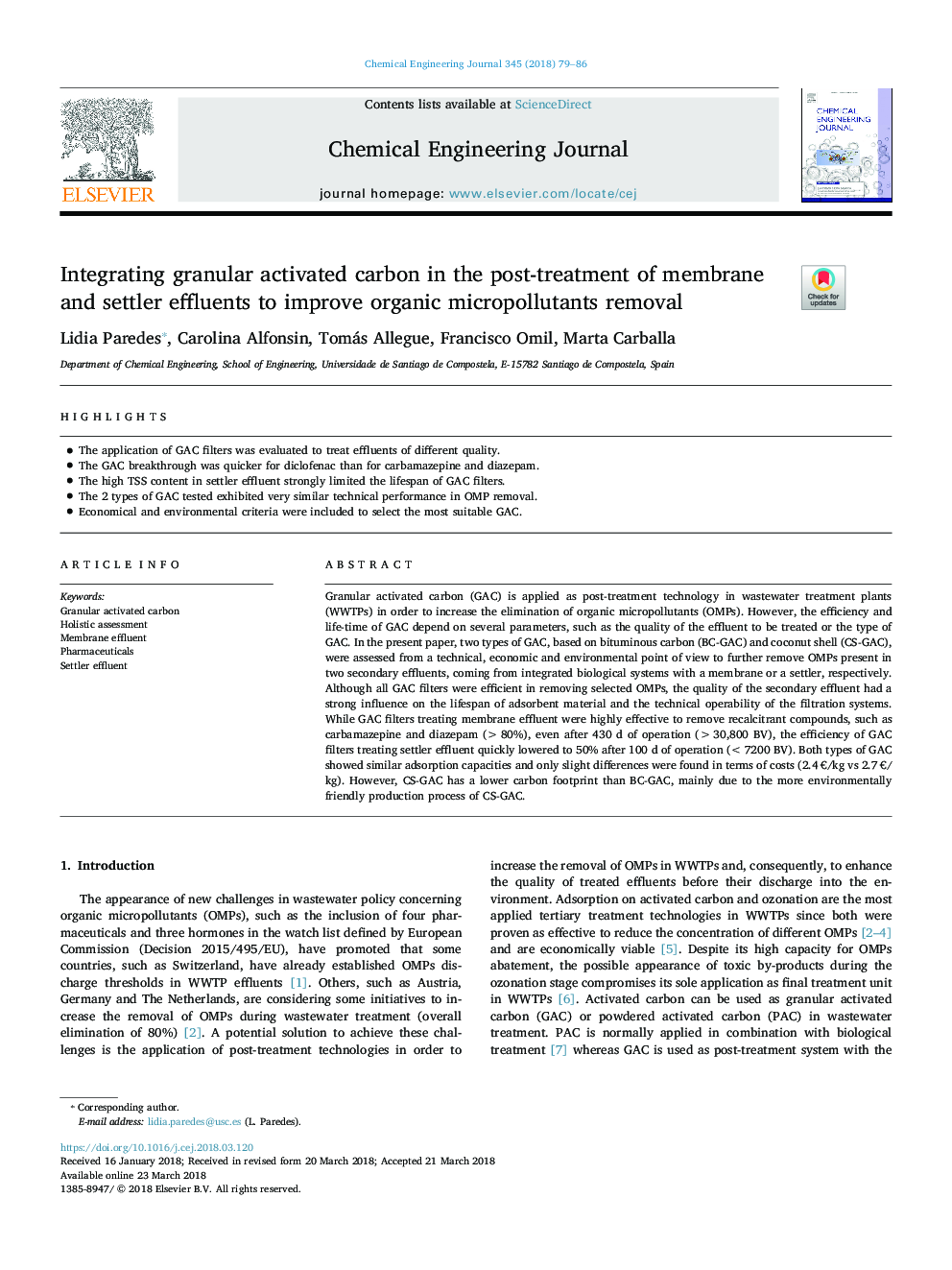| Article ID | Journal | Published Year | Pages | File Type |
|---|---|---|---|---|
| 6579379 | Chemical Engineering Journal | 2018 | 8 Pages |
Abstract
Granular activated carbon (GAC) is applied as post-treatment technology in wastewater treatment plants (WWTPs) in order to increase the elimination of organic micropollutants (OMPs). However, the efficiency and life-time of GAC depend on several parameters, such as the quality of the effluent to be treated or the type of GAC. In the present paper, two types of GAC, based on bituminous carbon (BC-GAC) and coconut shell (CS-GAC), were assessed from a technical, economic and environmental point of view to further remove OMPs present in two secondary effluents, coming from integrated biological systems with a membrane or a settler, respectively. Although all GAC filters were efficient in removing selected OMPs, the quality of the secondary effluent had a strong influence on the lifespan of adsorbent material and the technical operability of the filtration systems. While GAC filters treating membrane effluent were highly effective to remove recalcitrant compounds, such as carbamazepine and diazepam (>80%), even after 430 d of operation (>30,800 BV), the efficiency of GAC filters treating settler effluent quickly lowered to 50% after 100 d of operation (<7200 BV). Both types of GAC showed similar adsorption capacities and only slight differences were found in terms of costs (2.4â¯â¬/kg vs 2.7â¯â¬/kg). However, CS-GAC has a lower carbon footprint than BC-GAC, mainly due to the more environmentally friendly production process of CS-GAC.
Related Topics
Physical Sciences and Engineering
Chemical Engineering
Chemical Engineering (General)
Authors
Lidia Paredes, Carolina Alfonsin, Tomás Allegue, Francisco Omil, Marta Carballa,
